It seems yesterday that Tin HiFi (then Tin Audio) introduced the T3 – though that’s almost a year ago now. The company is now introducing their latest creation: the Tin HiFi T4, the newest earphones in their range to use dynamic drivers. A direct evolution over the T3, the new Tin T4 shed the balanced armature to provide better bass response and an even more neutral tuning.
Disclaimer: Linsoul sent me this pre-production unit before the official announcement. There is an ongoing Indiegogo crowdfunding campaign where you can get them for $79, compared to the official $110 price. Click here for the pre-order page on Linsoul’s website.
TL;DR: recap
| Pros |
Cons |
| Very well designed and assembled
Good cable Great accessory set Neutral tuning with added bass, upper mids and treble Good technical ability Super clean and clear presentation |
May be uncomfortable to some |
Rating: 9/10
Packaging & Accessories
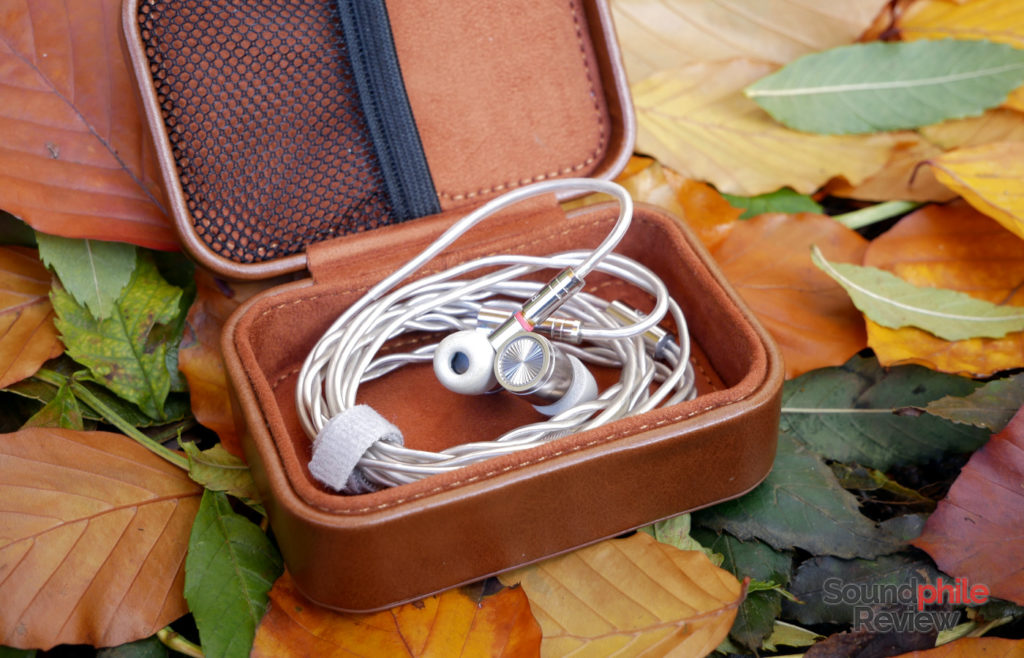
If you are interested in knowing more about the packaging of the T4, you can read my Headphones in Pictures article where you can find more information. As a short recap, the box includes the earphones with their removable cable, a set of eartips (one pair foam, three sizes of single-flanged grey eartips, three sizes of double-density, red-and-white eartips) and a very nice-looking faux-leather hard case. The case looks and feels very good, with a sensation of great solidity and durability. It’s just a bit large, so you probably won’t be able to fit it in your pockets (unless you have very big ones).
Design & Comfort
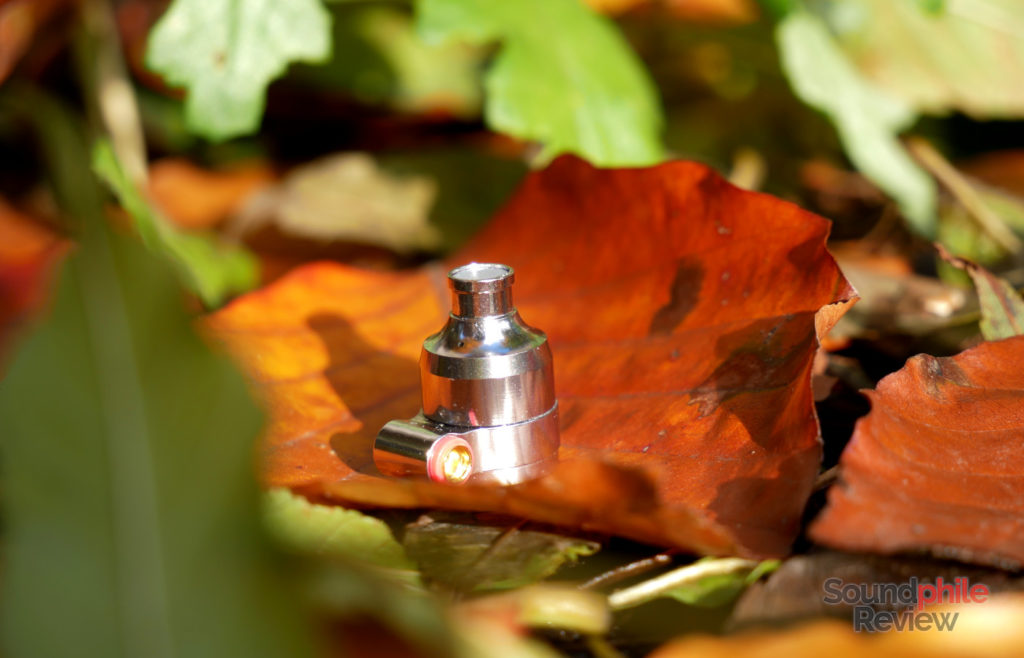
The Tin HiFi T4 is an evolution, not a revolution. It changes a few things that we might well call accessory: the bulk of the design stays the same. The shell is still a metal cylinder with a protrusion where the MMCX connector is. The main differences are the finish, which is now polished and shiny instead of matte, and the “faceplate”: the latter is inspired by jet engines, with a lot of rays that remind me of the blades of a plane’s engine. From a design perspective, the T4 are heirs to the T2 and the T3, but they bring something new to the table.
Contrary to previous models, which had a mix of matte and shiny, the T4 are just shiny with no matte. Every surface is shiny, so that the metal displays its presence in every detail – be it the main shell or the housings on the cable. This does give the T4 a more refined look, for some reason.
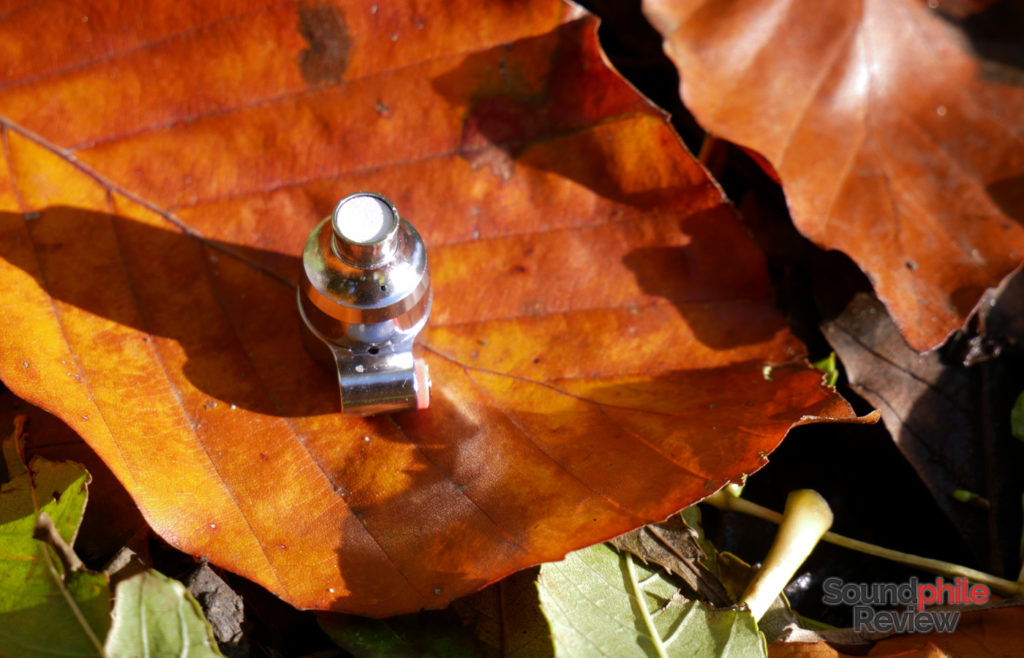
In terms of build quality, they are as good (if not even better) than usual. The Tin HiFi T4 are well built and I can’t find any fault in them as far as long-term usage is concerned – I can’t vow about the long-term reliability of connectors and the likes, but that would require months of testing and that’s a kind of test that is simply not possible (though I might update the review in the future if I find anything about my unit).
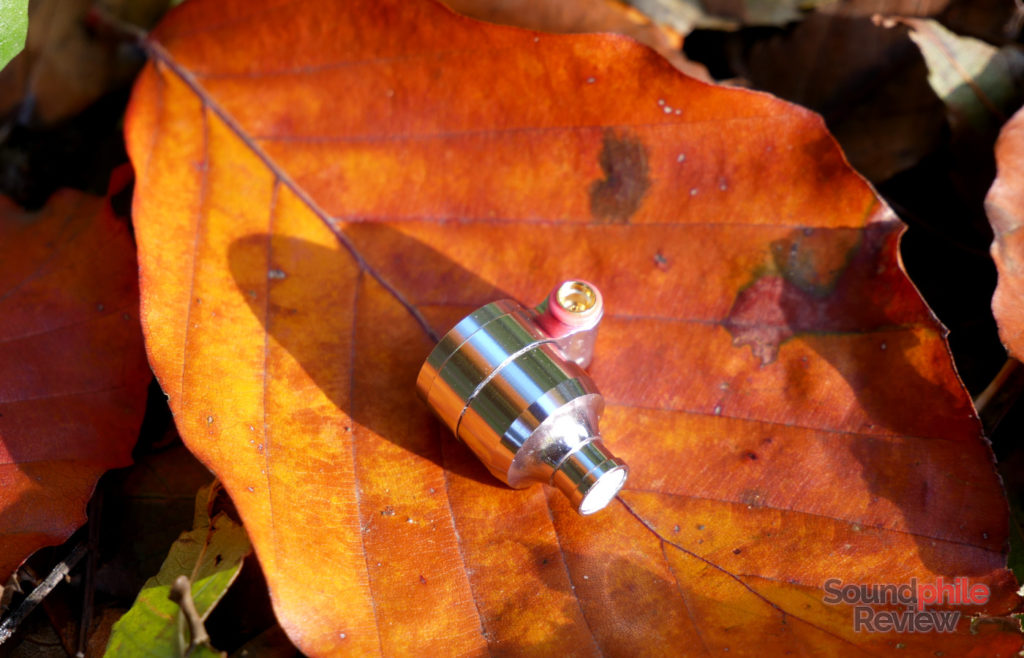
I found both the T2 and the T3 to be relatively comfortable. The T2 were especially comfortable to me. Despite having a largely similar shape, the Tin HiFi T4 never reach a similar result in comfort. What I personally found uncomfortable about the T4 is the clear-cut edge of the border surrounding the faceplate. It takes a few trials to get it to the right position. When it’s found, the Tin T4 are actually decently comfortable, though I would not take these for musical entertainment on a long journey as far as comfort is concerned. If you tried the T2, these should be pretty similar with some minor differences that could make them a bit more or a bit less comfortable.
The Tin T4 are not exactly isolating earphones, so they’re not the best for noisy situations where you need good isolation. I tried them, among other situations, in a relatively noisy London pub and they could never remove enough of the background noise to let me enjoy relatively quiet music properly. This holds true even when using foam tips, which are usually more isolating.
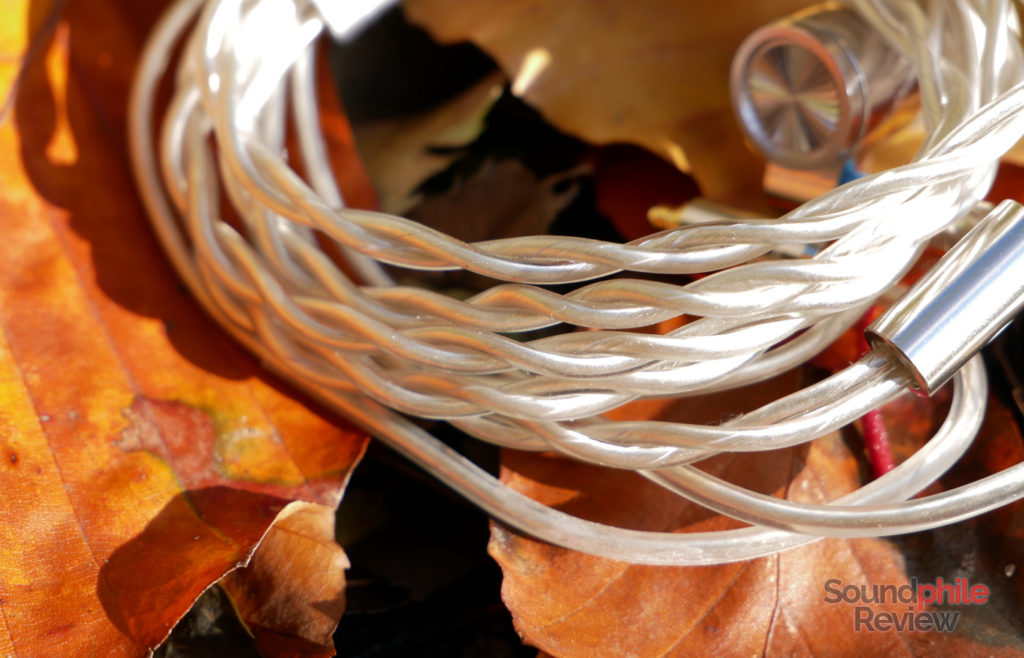
The cable has two cores. This may be surprising, given the current trend of adding cores upon cores to cables, but each core is very large so the cable is definitely not flimsy. Between the jack and the Y-split the cable is twisted, and after that there is a single core per channel. Each core is made of silver-plated copper and is covered with a transparent plastic sleeving. It seems like a fairly resistant and durable cable which one can rely on. It is also decently comfortable, though it can’t be worn hanging down as there is pre-moulded plastic that only makes it suitable for over-the-ear wearing. There is little microphonics, though there’s still some.
Sound & Specs
I tested the Tin HiFi T4 using a Burson Audio Playmate when listening at my desk, and a Shanling M2X and an EarStudio ES100 when on the move. Most source files are in FLAC format and have 16 bit / 44.1 kHz resolution.
Tin HiFi T4 |
| Frequency response | 10 – 20,000 Hz |
| Impedance | 32 Ω |
| Sensitivity | 102 ± 3 dB |
The Tin HiFi T4 are a bit of a “back to the roots” model for Tin HiFi: after the hybrid T3 and the planar P1, Tin HiFi decided to go back to a single dynamic driver design. This choice has indeed a good effect as it provides great coherence.
I found (by complete accident!) that the sound becomes much more treble-focused by pushing the earpieces forward. When leaving them in their natural place the sound is more bass-focused. This is true regardless of the eartips used. The foam tips tend to tame treble more than the others, which have very little difference between each other in terms of both comfort and sound.
Soundstage is relatively wide, with more width than depth as the stage extends to both left and right but not too much in front of the listener. Extension is limited in any case, so it’s not an expansive soundstage – it’s wide for a closed-back IEM, but it’s still leagues apart from an open-back headphone. Imaging is also more than decent, but not great: whereas instruments have a variety of places where they can be positioned apart from the basic “left-centre-right”, they are not really placed in a three-dimensional space (also due to soundstage limitations as mentioned previously). Instrument separation is very good, with even crowded tracks such as Mike Oldfield’s Finale from Tubular Bells 2003 always sounding clean and clear. It’s not the best I’ve heard, but it’s definitely more than good at this price point.
Bass has more of a sub-bass focus than a mid-bass one. Notes from the lowest area stand out more, and the driver gets to the deepest notes with great cleanliness. That’s probably the best quality of the T4 in general (so not only when speaking of bass): notes are very clean and clear, almost always easy to tell apart. Bass is overall a bit emphasised, but only to a limited extent so that it’s not overbearing or excessive. It never overshadows mids or leaks over them. It is decently well controlled, with medium speed: it’s not really fast, but it sounds fast enough not to sound dragged on nor bloated. It has that character that’s typical of dynamic drivers, so decay is not immediate yet not really long either, sitting in the right spot to be enjoyable. It’s also well textured, with a good amount of details that are easy to spot. It’s also enjoyably physical, with some impact that gives it a punchy look.
Midrange has some brightness, yet not too much actually. I would say that it’s close to the Harman Kardon curve, even though it’s not exactly that. It’s not “in your face”, but it sits in the front row and it’s always clearly audible. It’s really enjoyable as it’s close to neutral with some slight colouration that makes it more vivid. That’s especially true with wind instruments; trumpets, sax and other brass instruments are especially vivid and engaging. There is a very good amount of detail, also thanks to the good speed that characterises midrange. Drums are very convincing in that the transient is fast but there’s enough decay for them not to appear dry.
Treble is well extended, with a small peak in the lower area that then makes everything after it more emphasised. This emphasis gives more air and sparkle to the sound as a whole, though it may also be excessive to the treble-sensitive folks or those who like more relaxed treble presentation. Despite this added presence, there is no significant sibilance, nor I find the sound to be fatiguing or piercing at all (though, again, others may disagree with my impression). What emerges clearly is that treble is very well detailed throughout the whole range, with distinct notes emerging from the mix in a very clear and clean way. I find it to be extremely pleasant, especially given how it adds airiness and openness to the sound.
Tin HiFi T4 Comparisons
Here’s the thing: while writing this review I was London, and my larger collection is in Milan. By pure accident I had a few earphones with me. So here are a few relevant comparisons (I didn’t have the T2 with me, sorry):
- Tin HiFi T4 vs Tin HiFi T3: the T3 are similar to the T4, yet they’re different in every thing that counts. The T3 have less bass, with less depth and especially less detail, which result in the T4 sounding more accurate. Midrange is much more focused on the upper area, which gives it a much brighter tuning in comparison; this makes music more lively, but it also gives voices more sibilance and less depth. There’s also less detail. Treble has similar emphasis on the lower section, but it also has more peaks and is less extended and airy. As a consequence, the whole sound appears less open and in fact the sonudstage is narrower. Imaging is, again, better on the T4, as well as instrument separation. The T4 are just better on all fronts!
- Tin HiFi T4 vs Tin HiFi P1: the P1 use a planar driver instead of a dynamic driver and this has an effect over the tuning. Overall it’s the same Tin HiFi house sound, just with variations on the theme that are however sometimes significant. Probably due to the small size of the driver and its use in a closed housing, bass is much less present than on the T4, just south of neutrality. It is a bit less textured and less deep, but also a bit punchier. In terms of overall balance of bass, I personally prefer the P1. Midrange is much more emphasised and comes out as more “in your face”, also with a larger upper midrange presence and smaller lower midrange presence. Voices are much more emphasised, as well as other instruments such as electric guitars. Detail is slightly better on the P1. Treble is more emphasised and extended on the T4, which are also slightly more detailed. In terms of technical ability, though, the T4 win hands down: soundstage is larger, imaging is much better and instrument separation is better too (though this last element is the one where the T4 have less advantage).
- Tin HiFi T4 vs BLON BL-03: the BL-03 are roughly 1/3 the price of the T4, yet the comparison between them is interesting. The BL-03 are more bass-focused than the T4, with more bass especially in the sub-bass area; it’s much more prominent, to the point it’s one of the main ingredients of the signature. It’s not as punchy nor as detailed though, and it sometimes become a bit aggressive and covers the mids. Midrange has less emphasis on the upper area and appears slightly more neutral, though in the overall balance it’s more recessed. Again, there’s less detail. Treble is more relaxed and less extended than on the T4: it has less emphasis on the lower section, but then it also has less emphasis on everything else and less extension in general. Once again, the BL-03 are less detailed than the T4. When it comes to technical ability, the T4 are once again better: soundstage is slightly larger and instrument separation is definitely much better. Imaging is the only area where the BL-03 actually do better.
- Tin HiFi T4 vs oBravo Cupid: the Cupid are so different than the T4. They are heavily focused on bass, with recessed midrange and relaxed treble. Bass is much more prominent on the Cupid, with a prevalence of sub-bass; it sound almost overbearing and it gives the whole sound a very dark tone. Alas there’s also less detail as bass sounds bloated and not well controlled. Midrange is recessed and lacks presence in the middle region, so voices sound as if they lacked the necessary energy and vitality. Mids are often overcome by bass in the lower region. Treble is more relaxed and this could actually be a feature rather than a bug, but it’s also less extended and less detailed. The Cupid are much more closed-sounding, with a soundstage that is actually almost as wide as the T4’s, but that feels much smaller due to the bass. Imaging is better on the T4, which have much, much better instrument separation.
Final Thoughts
Being heirs to a very, very successful and highly loved product is never easy. Yet, it’s possible to improve in areas where the successful product did not impress. The Tin HiFi T4 are among those earphones that are incredibly easy to like. They basically fixed most of the “issues” of previous models by adding bass and reducing treble, therefore getting a more linear response (although previous models arguably already sounded very linear with some added brightness). Yet, I would say that the Tin T4 are very good, not exceptional. They sound much better than the average $110 IEM, but they’re not three times better than the $35 T2. Still, I think they are probably the best model after the T2 in terms of value (they are are better than the T2 in almost every possible sense, but they cost much more) and they will probably stay among my personal favourites due to their mix of great technical ability and highly enjoyable sound signature. I’m quite sure that those that found the T2 to lack bass will find the T4 more enjoyable. They are worth their price and probably some more. At the launch price of $80 they’re a steal and at $110 they are a very high value IEM.
What I want to stress here, though, is a warning that they are not a “giant killer” or any similar thing. They are very good earphones for sure, and they can probably compete with earphones up to $200, maybe even $250. They are still not competing with higher-priced earphones. The Moondrop A8 or the Fearless Audio S10 Genie are better in almost every possible sense. Yes, the Tin T4 are great, but don’t expect dragons and unicorns to come out of them.

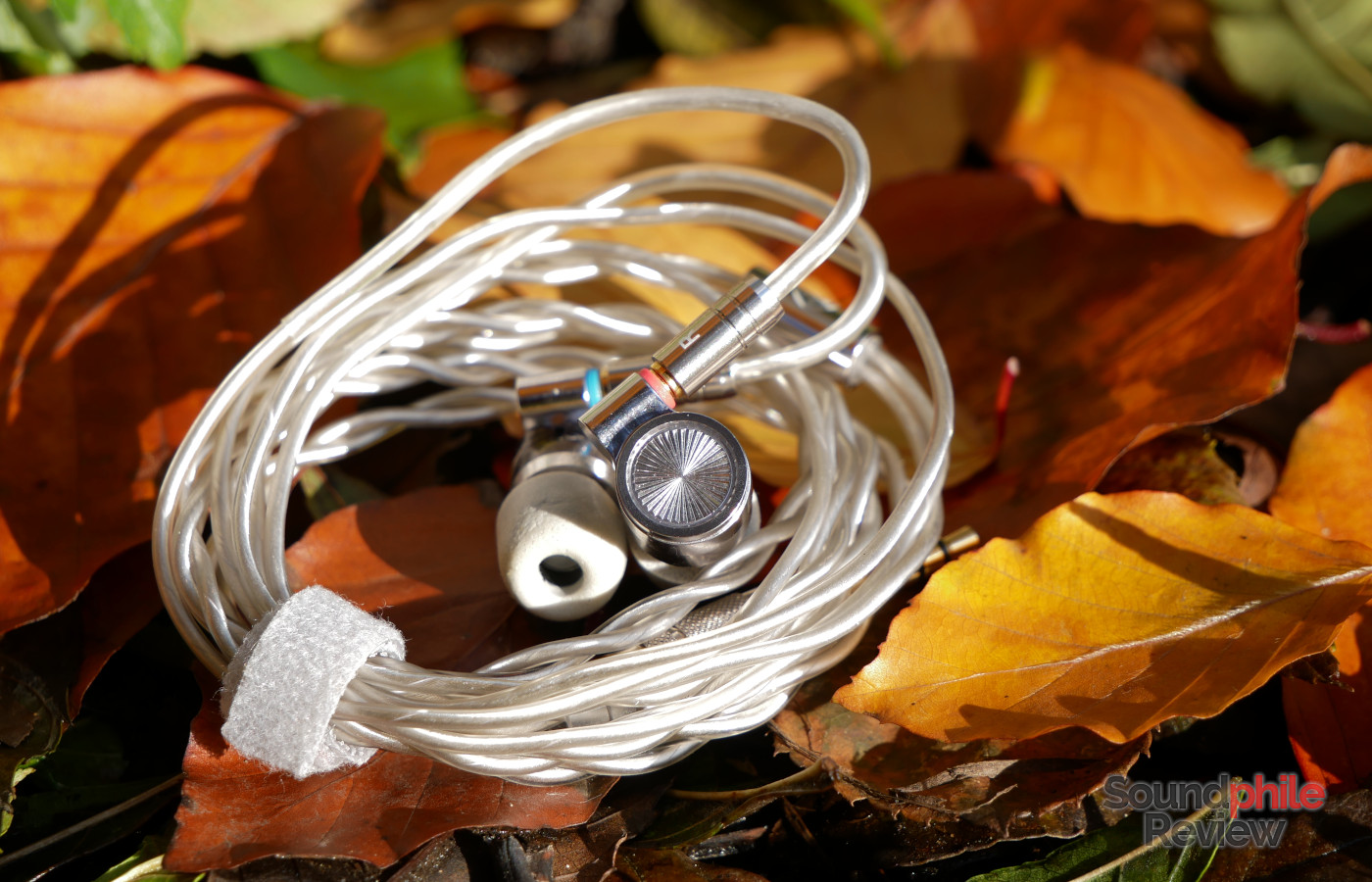


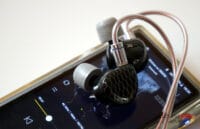
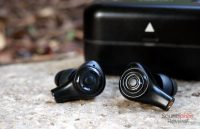
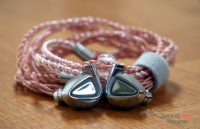


Thank you Riccardo for your beautiful review.
I own IMR R1 Zenith… have you ever listen to them?
Does Tin hifi T4 sound different?
Thank you in advance,
Alberto.
Hi Alberto,
I only tried them briefly (the “a few minutes” kind of briefly) so I can’t really provide you with a comparison.
Thank you very much for your reviews.
I’m currently looking for a good pair of IEM’s for live performances on stage. So far from all the different reviews I’ve seen, the recommendations are the CCA C16 followed by the TIN T3.
I notice that you mentioned that both the CCA C16 and the TIN T2/T3 ‘are one of those “must-have” Chi-Fi products’. You also mention that the T4 is better than the T3 on all fronts.
However you gave the following ratings:
CCA C16 = 9/10
TIN T3 = 9.6/10
TIN T4 = 9/10
Finally, at the moment, where I live these are available for:
C16 = $74
T3 = $60
T4 = $89 (Early Bird for the next 14 days)
So based on everything you’ve said, I’m assuming you would recommend the T3 over the other two. However, I’m wondering why the T4 scores lower than the T3 if you believe it to be better than the T3? And would the T4 be good for live performance? ( I haven’t managed to see any reviews on the T4 for live performance).
Thanks so much!
Hi Rene,
I would actually recommend the T4. The final rating is influenced by the price, so you should read it as “T3 has an incredible value while the other two have very high value”. You basically get more for your money if you buy the T3, but the T4 is better in absolute terms. The vote can’t disregard price, as otherwise basically anything below $100 would be rated between 5 and 7 and most stuff beyond $300 would be rated between 8 and 10.
I guess the T4 might be good for live performance, though it depends on what you are looking for: I have friends who are musicians and they have wildly varying needs, from heavily coloured signatures to better hear their instrument to complete neutrality, and from total isolation to no isolation at all. I don’t know where you sit in this spectrum so I can’t give you more advice in this sense.
Thanks so much for your reply, and thanks for explaining the value rating as well.
Yes, I’d be going for a somewhat neutral signature, although I’m not too sure how isolated I want it to be yet.
I’ll definitely order the T4 now based on your recommendation.
From the limited, objective reviews available on Nov 23 for the T4 versus the T3 (including graphs), the T4 / T3 comparison looks to be nearly the same as the T3 was to the T2. More interestingly, though – the BLON BL-03 seems to be pretty close to the T4 and worthy of attention, and the cost – even with upgraded tips and cable – would still be closer to the retail cost of the T3 but with many of the sonic attributes of the T4.
I think the genre, source, and format of one’s preferred music makes a HUGE difference, especially in the budget IEM category for value-conscious folks looking to minimize redundancy, as does the ancillary equipment (DAC, amp).
I also think it’s worth mentioning the use of a good EQ as a perfectly viable means of getting the most “range” from lesser-costly gear. I have a Tin T3, Fiio Q5 and Tripowin C8 2.5mm cable playing mostly Tidal and Spotify. Using this setup on the desktop with “Equalizer APO 1.2.1 Configuration Editor” works brilliantly and costs hundreds (or even thousands) less than purist gear incapable of returning a reasonable rate of return for the cost.
What’s your view on the T4 Vs Shure se425?
I don’t have the SE425 so I can’t compare them, sorry.
Hi Riccardo,
I’ve seen that you listen also Shanling M500 platinum, T4 is still better?
Hi Alberto,
I would say that’s definitely not the case. The ME500 Platinum are a notch above the T4.
Thank you Riccardo,
I’ve IMR RAH and Ikko OH10, but I’m looking for something more linear so I decide to order ME500 platinum that would pair well with My Shanling M6 pro.
Hi Ricardo,
I bought a pair of the T4 after I had T3’s which I ejoyed. I was looking forward to the improvements you mentioned. but it was disappointing. They have quite a large bulge in the midrange which gives a kind of retro sound to many recordings. while the treble above 6k is practically cut of up to 10 kHz This is the most disappointing thing since many recordings I listen too are basically unlistenable on the T4’s. They seem to favor certain types of recordings much more than others. While the T3’s also had a few weak genres. It never became unlistenable.
The T3’s also play much louder than the T4 at least on my equipment.
In the genre’s where the T4’s do excel they do sound better but only with equalization to flatten the response curve. I do not need to adjust any equalization on the T3’s or My AKG’s for instance.
I’m not sure why tin audio can’t make iems with a flatter response curve in general
Hello Chris,
That’s quite weird to be honest. Are you sure you don’t have a defective unit? This is the first time I read an opinion like yours and what I hear is nothing like your description.
As for volume, it’s normal: the T4 are 32 Ω and the T3 are 16 Ω, so there’s the reason why the T3 appear louder.